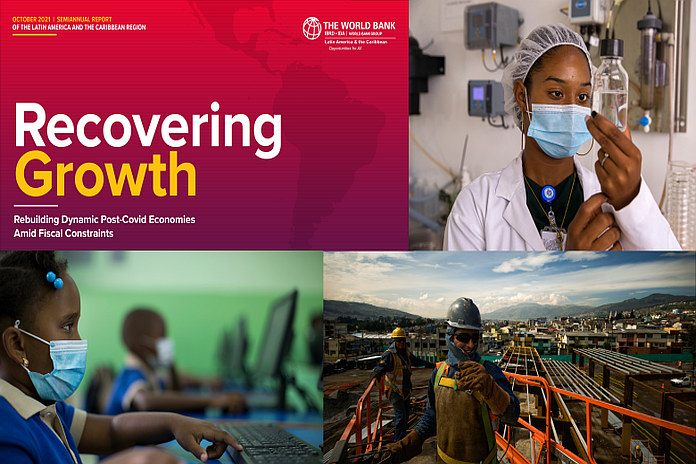WASHINGTON, USA – Economies in Latin America and the Caribbean (LAC) are on track to recover from the COVID-19 crisis, but the scars of the pandemic remain and the need for more dynamic, inclusive and sustainable growth is ever more urgent, according to a new World Bank report, “Consolidating the Recovery, Seizing Green Growth Opportunities”.
Following a 6.9 percent rebound in 2021, regional GDP is expected to grow 2.3 percent this year and a further 2.2 in 2023, with most countries reversing the GDP losses from the pandemic crisis. However, these modest projections place regional performance among the lowest in the world at a time when the region faces important uncertainties as new variants of the virus may appear, inflation pressures mount and the war in Europe threatens the world recovery. In fact, regional growth projections have been revised downward by 0.4 percent after the Russian invasion of Ukraine.
On the positive side, vaccination is widespread across the region, firms are again hiring, and schools are reopening. Nevertheless, long-term scars of the crisis remain and require attention. Poverty rates rose to 27.5 percent in 2021 and are still above their pre-COVID levels of 25.6 percent, while learning losses could lead to a 10 percent decrease in future earnings for millions of school age children. To avoid returning to the low growth rates of the 2010s, countries in the region need to engage long delayed structural reforms and seize the opportunities offered by a greening world economy.
“We are in a global context of great uncertainty, that could impact the post-pandemic recovery. In the long term, however, the challenges of climate change will be even more pressing, which forces us to urgently move to a growth agenda that is greener, more inclusive and that raises productivity,” said Carlos Felipe Jaramillo, vice president for Latin America and the Caribbean at the World Bank.
According to the report, growth advancing reforms in infrastructure, education and innovation remain paramount, and key investments should be financed through more efficient spending and revenue mobilization. But these much-needed reforms should respond to major forces shaping the global economy, including climate change.
Over the last two decades, the report stresses, countries in Latin America and the Caribbean lost the equivalent of 1.7 percent of a year’s GDP due to climate-related disasters and up to 5.8 million people could be pushed into extreme poverty in the region by 2030. Agriculture is likely to be hit hard, with crop yields decreasing in virtually all countries, and energy generation stability will be undermined by changes in the hydrological cycle.
“LAC has tremendous green comparative advantages, offering opportunities for new industries and exports. It has vast potential in renewable energy, large resources of lithium and copper used in green technologies, and a rich natural capital, all increasingly valued in a world where global warming and energy security are moving center stage”, said William Maloney, chief economist for Latin America and the Caribbean at the World Bank.
“However, both adapting to climate change and leveraging these opportunities for diversified and sustained growth will require improving the region’s capabilities to identify, adapt and implement new technologies”.
The report suggests a mix of policies that can help seize the green growth opportunities. These include:
- Pricing policies that encourage the adoption of existing low-carbon technologies, for example through reforming fossil fuel subsidies and establishing carbon taxes and emission trading schemes.
- Credible verification mechanisms that facilitate access to green premiums. This allows for exports of carbon credits/offsets and draws on the green finance market.
- Improved systems for identifying and adopting technologies to mitigate the region’s impact on climate, and to adapt to it, while leveraging its natural advantages for growth. Climate-smart agriculture, for example, can help countries adapt to changing precipitation patterns.
- Policy commitments, credible long-term plans, complementary investments and de-risking mechanisms, which reduce uncertainty and speed up the adoption of technologies that will promote growth while adapting to and mitigating climate change.





